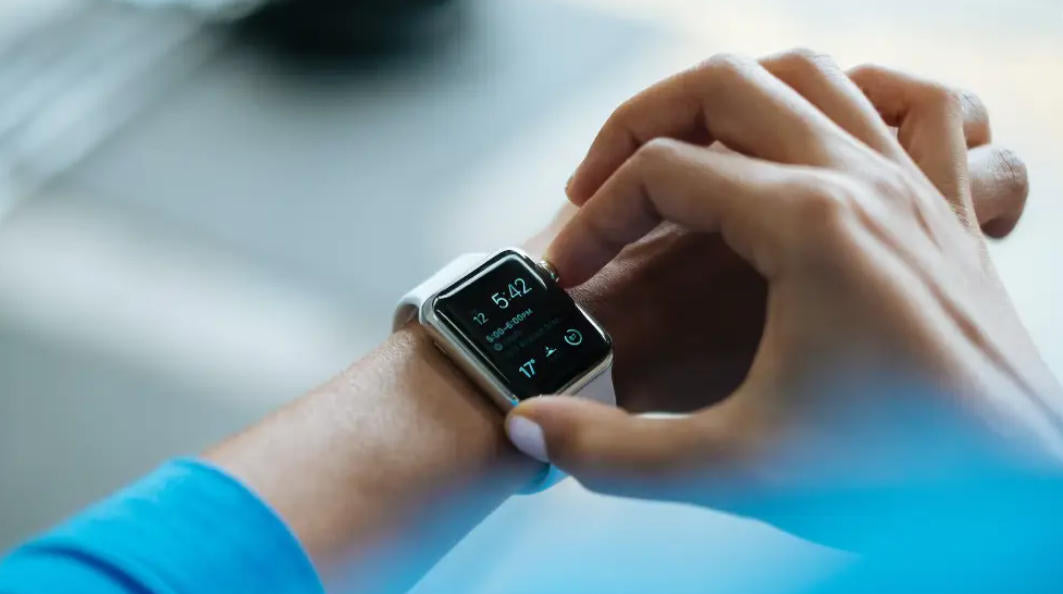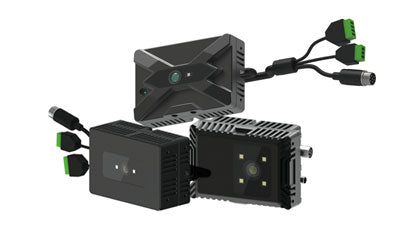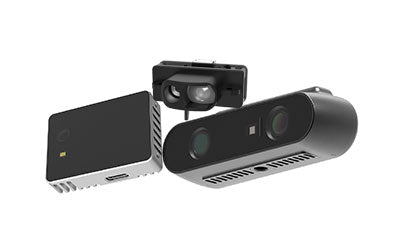Innovative Applications of TOF Technology in Wearable Devices

Which wearable devices can accurately track exercise posture and health data?
With the rapid development of artificial intelligence (AI) and the Internet of Things (IoT), wearable devices have gradually become daily health companions. From early pedometers to today’s fully functional smartwatches and fitness glasses, users’ demands for differentiated wearable features are continuously increasing. The key industry challenge is how to achieve high-precision motion tracking, posture recognition, and health management while maintaining portability. In this context, the application of TOF (Time-of-Flight) (https://en.wikipedia.org)technology is driving a whole new revolution.
What are smart wearable devices?
Smart wearable devices are electronic devices worn on the human body that utilize sensors, wireless communication, and computing technology to provide real-time perception and management of health, motion, environment, or lifestyle scenarios.
Key features include:
-
Real-time monitoring: Tracks physiological or motion data such as heart rate, blood oxygen, sleep quality, steps, and posture.
-
Intelligent analysis and feedback: Uses AI algorithms to analyze collected data, providing health suggestions, workout guidance, or alerts.
-
Connectivity: Syncs with smartphones, tablets, or cloud platforms via Bluetooth or Wi-Fi for remote monitoring or social sharing.
-
Convenient wearability: Designed to be lightweight and comfortable for long-term wear, including smartwatches, fitness bands, smart glasses, and smart insoles.
Typical applications:
-
Fitness: Running posture analysis, stride calculation, calorie tracking.
-
Health management: Heart rate monitoring, blood oxygen measurement, sleep quality analysis, fall detection.
-
Medical assistance: Remote monitoring of patient vitals, rehabilitation guidance.
-
Daily life: Payment, navigation, notifications, smart home control.
In short, smart wearable devices not only collect data but also provide intelligent insights to help users improve health, optimize exercise, and enhance daily convenience.

1. Trends in Wearable Device Function Expansion
Early wearable devices were mainly pedometers and heart rate monitors with limited functions and experience. These devices could only provide basic motion data, which is no longer sufficient to meet modern users’ expectations for intelligent health management and fitness guidance.
Today, users want wearable devices to offer:
-
Real-time health management: Continuous monitoring of heart rate, blood oxygen (SpO₂), sleep quality, stress levels, and other physiological indicators.
-
Smart fitness guidance: Motion correction, training plan recommendations, and performance feedback for more scientific and effective workouts.
-
Personalized exercise analysis: Customized reports based on user habits, body status, and goals to optimize workout plans.
Fitness Scenarios: Beyond Step Counting
In fitness, step counting is no longer enough. Users care more about exercise accuracy and training effectiveness:
-
Running and brisk walking: Monitor stride, foot landing, and overall posture to prevent injuries.
-
Yoga and strength training: Correct joint angles and proper form directly impact results.
-
Dynamic training: Real-time tracking of repetitions, joint angles, and movement smoothness helps users adjust immediately and improve training quality.
Health Management: Meeting Diverse Needs
Wearable devices also show diversification in health management:
-
Young users: Expect support for daily habits, stress management, exercise reminders, and health advice.
-
Older users: Focus on fall detection, abnormal heart rate alerts, and emergency calls to ensure safety.
Breaking Through 2D Monitoring Limitations
Traditional wearables rely on 2D motion sensors, which track linear motion but cannot accurately recognize complex postures and spatial movements. To achieve precise, real-time, 3D monitoring and guidance, core technologies with three-dimensional spatial perception are needed.
TOF wearable devices are a solution:
-
3D depth perception: TOF (Time-of-Flight) sensors capture spatial positions, joint angles, and subtle movements in real time, generating high-precision 3D data.
-
Intelligent fitness guidance: With 3D perception, devices can correct motion deviations instantly, providing professional feedback without a personal trainer.
-
Advanced health monitoring: TOF can detect subtle movements, fall risks, and abnormal postures, providing reliable data for preventive health management.
In summary, wearable device functions are evolving from simple motion tracking to intelligent health management and personalized fitness guidance. Integrating TOF technology with 3D spatial perception allows wearables to deliver accurate, real-time, and personalized health and exercise data, creating the next-generation intelligent health experience.
2. TOF Enables High-Precision Motion Tracking
As smart fitness and wearable devices evolve, users’ expectations extend beyond counting steps or monitoring heart rate—they demand motion accuracy, exercise efficiency, and training effectiveness. Traditional accelerometer and gyroscope-based tracking captures basic motion data but has clear limitations in motion precision, 3D spatial awareness, and dynamic feedback. The introduction of TOF (Time-of-Flight) technology provides a new solution for high-precision motion tracking.
Real-Time 3D Motion Capture
TOF technology emits light pulses and measures their return time to generate high-precision 3D depth data. Unlike traditional 2D tracking, TOF wearables can capture users’ spatial movement trajectories in real time, including arms, legs, and torso.
-
Full-body motion tracking: TOF records start and end points, angle changes, and motion amplitude for running, jumping rope, squats, push-ups, and more.
-
Real-time feedback: Motion data can be transmitted to a smartphone app or smart display to help users adjust posture and rhythm immediately.
Accurate Posture Recognition and Motion Evaluation
Beyond tracking exercise volume, TOF can analyze posture, assessing whether movements are standard and reducing injury risk.
-
Motion amplitude analysis: For squats or push-ups, TOF tracks knee bend angles, back tilt, and arm swing to determine correctness.
-
Personalized training suggestions: Combined with AI algorithms, the system generates tailored reports, offering posture correction, repetition optimization, and training intensity guidance.
Professional-Level Performance Analysis
With 3D spatial perception and deep learning, TOF wearables provide lab-grade analysis:
-
Running analysis: Measures stride, landing posture, body tilt, cadence, and center-of-mass shifts to optimize running technique.
-
Strength training analysis: Tracks rhythm, muscle activation sequence, and motion trajectories to support scientific training plans.
-
Rehabilitation and health management: Monitors recovery exercises, assesses joint flexibility, and evaluates muscle recovery, providing data-driven rehab guidance.
Application Examples
-
Smart fitness bands/wristbands: Equipped with TOF sensors to capture motion data and provide real-time corrections and feedback via apps.
-
Smart fitness mirrors/equipment: Use TOF to scan and analyze full-body 3D motions, showing posture and performance in real time.
-
Professional sports and rehab labs: Utilize TOF to collect motion trajectories and perform biomechanical analysis for research or rehabilitation purposes.
In short, TOF wearables can capture 3D motion data in real time, combine it with AI for posture analysis, training optimization, and performance evaluation, helping users improve exercise outcomes, prevent injuries, and advance smart fitness toward a scientific and professional level.

3. TOF-Enabled Health Management and Medical Assistance
With the development of wearable devices and smart health technologies, users’ health management needs have expanded beyond simple heart rate or blood pressure monitoring. They now expect comprehensive, precise, and real-time health data support. TOF (Time-of-Flight) technology, with its high-precision 3D spatial perception capability, shows immense potential in health management and medical assistance.
Non-Invasive Health Monitoring
TOF wearables can obtain key physiological parameters through non-contact depth sensing, enabling continuous, non-invasive monitoring around the clock:
-
Respiration rate monitoring: By detecting subtle chest and abdominal movements, TOF can record breathing rate and depth in real time, supporting alerts for abnormal breathing, such as sleep apnea or rapid breathing.
-
Sleep posture analysis: Using 3D spatial data, TOF can track changes in sleep posture, turning frequency, and nighttime activity, aiding scientific sleep management and improving sleep quality.
-
Posture and activity monitoring: In daily life, TOF captures sitting, standing, and general activity movements, providing data for long-term health management and helping correct poor posture or habits.
Rehabilitation Training Support
In rehabilitation and physical therapy scenarios, TOF enables precise motion tracking and real-time feedback:
-
Action completion assessment: Devices can identify angles, amplitude, and rhythm of rehabilitation exercises to ensure proper form and maximize training effect.
-
Remote guidance by physicians: Doctors can monitor rehabilitation progress remotely using 3D motion data captured by TOF and adjust training plans, reducing the need for frequent in-person visits and improving rehabilitation efficiency.
-
Training data recording and analysis: Long-term data accumulation forms personalized rehabilitation records, providing scientific support for subsequent treatment and health evaluation.
Fall Detection and Safety Alerts for Seniors
Ensuring the safety of elderly users is a critical aspect of home health management. Traditional accelerometer-based fall detection often triggers false alarms, whereas TOF technology can accurately identify human spatial posture and motion trajectories, significantly improving fall detection accuracy:
-
Real-time fall recognition: TOF monitors daily activity and immediately triggers an alert if abnormal falling or unusual movements are detected.
-
Intelligent alerts and automation: Fall events can notify family members or caregivers in real time and interact with smart home devices, such as automatically turning on lights or calling emergency services.
-
Environmental adaptability: TOF can reliably detect human motion even in low-light or crowded environments, ensuring continuous safety monitoring.
Towards Future Home Health Management
TOF technology not only enhances exercise precision and scientific monitoring but also opens new possibilities for smart home health management:
-
Useful for chronic disease management, continuously monitoring heart rate, breathing, and daily activity to track health trends.
-
Can integrate with AI algorithms to provide personalized health advice, such as adjusting exercise intensity, optimizing rehabilitation, or improving sleep.
-
Serves as a smart medical aid, enabling remote monitoring, rehabilitation guidance, and emergency safety protection in a home setting.
In summary, TOF wearables are gradually extending from motion tracking to comprehensive health management and medical assistance, becoming a core technology in future smart home health ecosystems and offering precise, safe, and personalized health protection.

4. Industry Applications and Product Cases: TOF-Enabled Wearable Device Implementations
As TOF (Time-of-Flight) technology matures, more leading companies are integrating it into smartwatches, fitness devices, and wearable health products to achieve high-precision monitoring of motion, health, and training. The high-precision 3D spatial perception of TOF allows wearables not only to record basic data but also to perform motion recognition, posture analysis, and real-time feedback, upgrading the industry from simple data collection to intelligent guidance.
TOF Applications in Smartwatches
-
Precise motion tracking: Brands like Garmin and Apple Watch are exploring the integration of TOF sensors with accelerometers and gyroscopes to achieve real-time 3D motion capture.
-
During running, TOF can capture stride, landing angle, and knee bend, offering more accurate insights than traditional accelerometers.
-
In cycling or strength training, TOF combined with algorithms can assess motion standardization, helping users optimize posture and reduce injury risk.
-
-
Enhanced health monitoring: TOF assists in monitoring respiration, posture changes, and sleep, providing more complete data for health analysis.
-
Personalized training guidance: Through depth data and AI, smartwatches can deliver targeted recommendations, such as running pace optimization, calorie assessment, or rehab training prompts.
Fitness Glasses and Augmented Reality (AR)
-
Real-time posture recognition: Fitness glasses equipped with TOF can accurately recognize training movements and postures, such as squats, dumbbell lifts, or yoga poses.
-
AR guidance: Users can see real-time motion comparisons or correction prompts on an AR interface, as if having a personal trainer.
-
Immersive training experience: TOF + AR improves data accuracy while enhancing engagement and motivation, making workouts more scientific and enjoyable.
Industry Trends and Application Expansion
-
Home rehabilitation and remote healthcare: TOF wearables capture real-time motion during rehab, supporting remote doctor guidance and improving recovery efficiency.
-
Elderly safety monitoring: By tracking falls, abnormal activity, and daily habits, TOF devices provide 24/7 protection for seniors living alone.
-
Sports science and athletic training: Professional athletes and coaches use TOF data for motion analysis, posture optimization, and performance evaluation, enabling data-driven scientific training.
These cases show that TOF wearables have moved from proof-of-concept to real-world application, covering daily health management, fitness, medical rehabilitation, and senior safety. With the deep integration of TOF with AI, cloud analytics, and AR/VR, future wearables will evolve beyond data recording tools into intelligent, personalized health assistants, driving the wearable industry toward higher precision, intelligence, and user-friendliness.
5. Future Trends: Intelligent Health Ecosystem for TOF Wearables
With continuous development, TOF (Time-of-Flight) technology in wearables is moving toward higher precision, smarter functionality, and comprehensive health management. In the future, TOF will deeply integrate with AI, IoT, and big data analytics to create an integrated, personalized health ecosystem, ushering wearable devices into a new era of smart health.
1. AI + TOF Fusion for Intelligent Health Management
-
Personalized fitness guidance: AI can analyze motion trajectories, postures, and physiological data to provide precise action analysis and correction for running, strength training, yoga, and more.
-
Disease risk prediction and health alerts: By combining heart rate, respiration, gait, and sleep posture data, AI can detect abnormal patterns and warn of potential health risks, such as sports injuries, cardiovascular issues, or sleep apnea.
-
Dynamic adaptive training plans: Systems can automatically adjust training intensity, duration, and rest cycles according to real-time user status and goals, providing scientific and efficient workout experiences.
2. Integration with Medical IoT Platforms for Remote Monitoring
-
Remote healthcare support: Depth motion and health data from TOF wearables can be securely transmitted to medical IoT platforms, allowing doctors to monitor rehabilitation or daily health remotely.
-
Chronic disease management and elderly care: Devices can continuously track gait, falls, activity levels, and sleep quality, generating health reports for timely interventions.
-
Home health record construction: User data creates personal health records, documenting exercise habits, rehabilitation progress, and daily routines for precision medicine.
3. Comprehensive Health Ecosystem and Life Scenarios
-
Emotion recognition and mental health: TOF wearables may combine facial expressions, posture, and motion data to assess emotional states and support mental wellness.
-
Posture correction and rehabilitation assistance: Devices monitor sitting, walking, or training postures, providing real-time corrective feedback to reduce risks from prolonged sitting or improper exercise.
-
Wellness and lifestyle optimization: By linking with smart homes, gym equipment, virtual trainers, and health apps, TOF wearables can guide exercise planning, nutrition, and sleep, creating a personalized, comprehensive health lifestyle.
4. Industry Development Trends
-
Data-driven intelligence: As TOF sensor precision improves and AI algorithms advance, wearables will not only record data but actively analyze, predict, and guide user behavior.
-
Multimodal integration: TOF will work alongside heart rate, temperature, blood oxygen, GPS, and other sensors to provide multi-dimensional health monitoring and more accurate assessments.
-
Widespread adoption and commercialization: With decreasing hardware costs and technological maturity, TOF wearables will expand from high-end fitness and medical sectors to the mass market, driving the deployment of smart health ecosystems.
In the future, TOF wearables will no longer be just 'pedometers' or 'heart rate monitors' but intelligent health assistants that understand user behavior, predict health trends, and provide personalized guidance. Through the integration of AI, IoT, and TOF technology, users will experience seamless, intelligent, and holistic health management, stepping into the digital health lifestyle era.
Conclusion
TOF wearable technology is driving the evolution of wearables from single-function devices to multi-dimensional health management tools. With advantages in motion tracking, posture recognition, and health management, it enhances user experience and adds significant value in medical assistance and elderly care. As AI and IoT integration deepens, future wearables will become not just tools, but personal health companions, helping people achieve a more scientific, safe, and efficient lifestyle.
Synexens Industrial Outdoor 4m TOF Sensor Depth 3D Camera Rangefinder_CS40
Our professional technical team specializing in 3D camera ranging is ready to assist you at any time. Whether you encounter any issues with your TOF camera after purchase or need clarification on TOF technology, feel free to contact us anytime. We are committed to providing high-quality technical after-sales service and user experience, ensuring your peace of mind in both shopping and using our products



